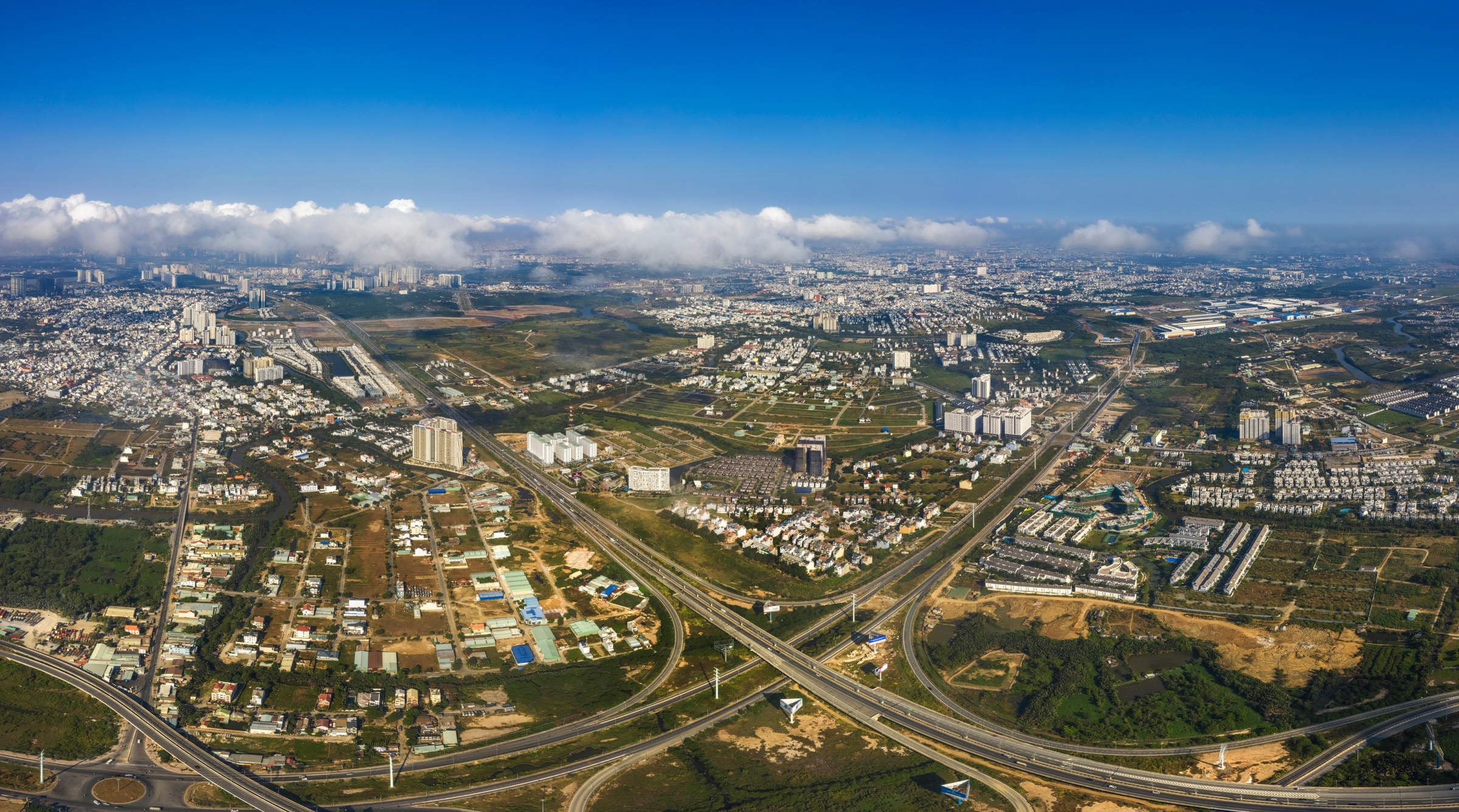HO CHI MINH CITY’S ECONOMIC RESURGENCE: BALANCING GROWTH AND CHALLENGES
While Ho Chi Minh City’s economic and urban planning strategies reflect a city poised for sustained growth and development, challenges remain. The significant shortfall in public investment disbursement underscores the need for improved efficiency and transparency in project implementation.
As Ho Chi Minh City navigates the complexities of the global economic environment, its focus on strategic urban development and robust economic policies will be crucial in maintaining its upward trajectory. The city’s ability to leverage its strengths, address infrastructural bottlenecks, and foster an inclusive growth environment will determine its success in becoming a leading economic powerhouse in the region.
GRDP Growth of 6.46%: A Sign of Resilience
In a landscape marked by global economic turbulence, Ho Chi Minh City has managed to chart a path of resilience and growth. The latest report from the Ho Chi Minh City Statistics Office reveals a nuanced picture of recovery intertwined with persistent obstacles.
The Gross Regional Domestic Product (GRDP) increased by 6.46% in the first half of 2024, signaling a robust economic rebound. The Industrial Production Index (IPP) also saw a significant rise of 5.6%, the highest in three years. Budget revenues surged, with the total for the first half of the year estimated at over VND 264 trillion, a 16% year-on-year increase, achieving nearly 55% of the annual target. This was driven by a remarkable 26.1% increase in domestic revenue, highlighting substantial contributions from state-owned enterprises, foreign direct investment (FDI) firms, and the private sector.
The service sector, a cornerstone of Ho Chi Minh City’s economy, played a pivotal role in this growth. The nine key service industries accounted for approximately 60% of the GRDP and 91.3% of the service sector’s output. Particularly noteworthy are the performances in trade (16.4%), transportation and warehousing (10.5%), finance and banking (9.1%), and professional, scientific, and technical activities (5.4%).
Retail and Service Sector Performance: Indicators of Strong Consumer Confidence
The retail and service sectors have demonstrated impressive growth, reflecting robust consumer confidence. Total retail sales of goods and consumer service revenue for the first half of 2024 grew by 10% year-on-year. Retail sales alone increased by 10.2%, while accommodation and food services rose by 8.1%. Travel services surged by an extraordinary 63.3%, indicating a strong rebound in tourism, which had been severely impacted by the pandemic. Other services grew by 7.2%, further contributing to the sector’s robust performance.
The tourism sector, a significant driver of Ho Chi Minh City’s economy, reported total revenue of VND 92.643 trillion for the first half of 2024, a 14.6% increase year-on-year. Domestic tourists totaled approximately 17.1 million, a 4.4% increase year-on-year, achieving 45.1% of the annual target. International tourist arrivals numbered around 2.68 million, a significant 38% increase from the same period in 2023, meeting 44.6% of the 2024 goal.
Economic Structure in H1/2024: A Diversified Landscape
The economic structure for the first half of 2024 reveals a diversified landscape. The agriculture, forestry, and fisheries sectors accounted for 11.55%; the industry and construction sectors at 36.44%; the service sector at 43.35%; and product taxes minus subsidies at 8.66%. These figures reflect a slight shift from the same period in 2023, with minor decreases in agriculture and industry offset by gains in services.
However, the report flags concerns regarding declining public investment and budget expenditures. Public investment disbursement in the first half of the year reached nearly VND 15 trillion, approximately 19% of the target, which aimed for at least 30% by the end of Q2. This shortfall raises questions about the efficiency and speed of public investment projects, critical for sustaining long-term growth.

Urban Development Plans: Crafting the Future Metropolis
Looking ahead, Ho Chi Minh City’s ambitious urban development plan anticipates a population boom, reaching 13 million by 2040, 14.5 million by 2050, and 16 million by 2060. This vision is encapsulated in the blueprint for five distinct urban regions, each with unique development goals and characteristics.
- Central Urban Region: Encompassing Districts 1, 3, 4, 5, 6, 8, Binh Thanh, Phu Nhuan, Tan Binh, Go Vap, Binh Tan, and parts of District 12, this region is bounded by the Ring Road 2 to the north and west, Kenh Doi – Kenh Te to the south, and the Saigon River to the east. Spanning approximately 17,000 hectares, it is home to about 4.5 million people (as of 2019).
- Eastern Urban Region: Established as Thu Duc City, this area covers 21,000 hectares and has a population of about 1.1 million (as of 2019).
- Northern – North-Western Urban Region: This region includes Cu Chi District, Hoc Mon District, and parts of District 12, spanning approximately 58,500 hectares with a population of about 1.4 million (as of 2019). It is bordered by Tay Ninh to the north, Long An Province to the west, the administrative boundary between Hoc Mon and Binh Chanh Districts to the south, and Ring Road 2 to the east.
- Western Urban Region: This region largely encompasses Binh Chanh District, spanning 23,300 hectares with a population of about 840,000 (as of 2019). It is defined by the administrative boundary between Hoc Mon and Binh Chanh Districts to the north, Long An Province to the south and west, and Ring Road 2 and Can Giuoc River to the east.
- Southern Urban Region: Including District 7, Nha Be District, parts of Binh Chanh District, and the entirety of Can Gio District, this area covers 93,300 hectares, including the Can Gio Biosphere Reserve, with a population of about 1.2 million (as of 2019). It is bounded by Kenh Doi – Kenh Te to the north, Long An Province and the Can Gio Sea to the south, Dong Nai River to the east, and Can Giuoc River to the west.
Transportation Development: The Lifeblood of Urban Expansion
Ho Chi Minh City’s urban development plan integrates significant transportation infrastructure projects, aimed at solidifying the city’s status as a regional economic hub. Key projects include extending Nguyen Huu Tho Road, connecting coastal roads in Tien Giang, linking to Long Thanh Airport, and enhancing connectivity with Dong Nai Province and the broader rail network. The plan also prioritizes transit-oriented development (TOD) along metro lines and the Ring Road 3, facilitating sustainable urban growth.
Get professional insights in Vietnam properties, residential leasing and asset management by Arcadia Consulting Vietnam, reach our Residential Services team at rs@arcadia-consult.com.vn.

